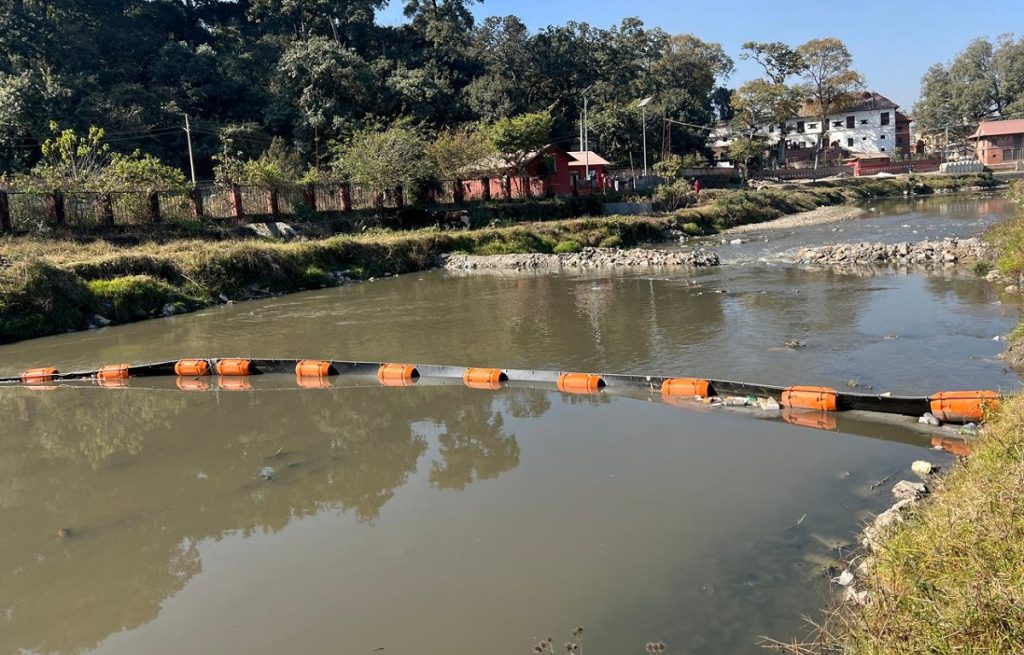
There is a widespread misconception in Nepal—and in many countries that all land in China is entirely owned by the state, and that individuals cannot buy, sell, or inherit land or property. Some even believe that property rights are not transferred across generations in China. These assumptions, however, do not accurately reflect the reality of China’s land management system. To clarify these misunderstandings, this article aims to shed light on how China’s system truly functions.
China’s land management system presents a unique and dynamic model that successfully balances strong state ownership with market-oriented mechanisms. Since the founding of the People’s Republic in 1949, China has introduced a series of transformative land reforms that align with its shifting economic priorities and governance strategies.
These reforms not only support rapid urbanisation and rural revitalisation but also provide valuable lessons for developing countries like Nepal that are grappling with issues related to land ownership, rural development, urban planning, and environmental sustainability.
Historical foundations of China’s land system
At the outset, all land in China was nationalised. Urban land was declared state-owned, while rural land was placed under collective ownership, administered by village-level collectives.
During the 1950s, the rural land system was reorganised under the People’s Commune system, which eliminated individual land ownership and usage rights. Farmland was cultivated collectively, and land could not be bought, sold, or transferred.
This rigid system began to change in the late 1970s with the economic reforms initiated by Deng Xiaoping. The communes were dismantled and replaced by the Household Responsibility System (HRS), which allowed rural households to contract land for agricultural production, typically for 30-year terms.
While the collective retained ownership, farmers gained the right to use the land and retain the income from their labour. This reform significantly boosted agricultural productivity and improved rural livelihoods.
Urban land reforms and legal frameworks
Urban land management also underwent major reforms in the 1980s. The 1988 amendment to China’s Constitution permitted the transfer and lease of land-use rights, marking a significant shift toward a market-oriented system.
Local governments were authorised to grant land-use rights for periods of 40 to 70 years, depending on the designated use: 70 years for residential, 50 years for industrial, and 40 years for commercial purposes.
Although urban land remains state-owned, these usage rights are inheritable, transferable, and mortgageable. In many localities, land-use rights can be automatically or renegotiated upon expiry. Urban land is registered under a unified real estate registration system managed by the Ministry of Natural Resources, ensuring legal security and transparency.
To address inefficiencies in rural land use, China launched a landmark reform between 2014 and 2019 known as the “Three Rights Separation” policy.
This reform distinguished between three types of rights: ownership (retained by the collective), contractual rights (assigned to individual farmers), and operational rights (which could be leased or mortgaged).
This policy facilitated land consolidation, encouraged professional farming, and supported the development of rural cooperatives, while safeguarding the long-term interests of farming households. Importantly, both contractual and operational rights are inheritable, enabling intergenerational land use within registered households.
Legal reforms and rural land market integration
A significant legislative milestone came in 2019 with the revision of the Land Management Law, which allowed collectively owned rural construction land to be transferred into the urban market under official planning frameworks.
While this reform addressed legal barriers that had previously restricted rural land transactions, it also concentrated decision-making power in the hands of local governments. This has raised concerns about equitable compensation for farmers and the risk of over-reliance on land sales as a source of local revenue.
To strengthen collective governance and accountability, China passed the Rural Collective Economic Organisations Law in June 2024, which will come into effect in May 2025. This law aims to enhance transparency in land-related decisions, ensure fair compensation during land expropriation, and protect rural households from unauthorised land deals.
Land registration systems have also advanced, with digital mapping and national databases improving clarity and reducing disputes over land rights.
Current trends and future directions
Today, China continues to experiment with flexible uses of rural land, particularly for residential and small-scale industrial activities.
The central government has mandated that at least 50% of revenue from land sales be allocated to rural development by 2025. However, implementation remains uneven due to the heavy fiscal dependence of many local governments on land leasing.
To address these challenges, China is leveraging modern technologies such as Geographic Information Systems (GIS), big data, and blockchain to enhance land governance, enforce environmental regulations, and support rural revitalisation strategies.
Lessons for developing countries like Nepal
China’s experience offers several valuable lessons for developing countries, including Nepal. One important lesson is the need to ensure secure and transferable land-use rights. When farmers and land users have secure and transferable rights to the land, it can significantly boost productivity and encourage long-term investments in agriculture and infrastructure.
Another key lesson is the separation of ownership and use. By distinguishing between ownership and operational rights, the land can be utilised more flexibly and efficiently, while still maintaining state or collective oversight. This system allows for greater flexibility in land use, which can improve agricultural output and support sustainable development practices.
Land classification is another vital lesson for Nepal. In China, the classification of land in both rural and urban areas has proven crucial. It ensures a systematic and sustainable approach to land use while protecting the land itself. This allows the government to utilise classified land in a way that aligns with national development goals. Such a system is critical for the overall development of a country like Nepal, where proper land management is necessary to avoid mismanagement and overexploitation.
Furthermore, China’s robust registration systems are another lesson worth adopting. A transparent and digitised land registration system helps to reduce disputes, enhance land security, and support smoother market transactions.
Additionally, by effectively managing land, the government can generate significant revenue from land properties. In China, where all urban land is state-owned, the government collects rent and revenue, maintaining a strong financial base. This model could serve as an important mechanism for strengthening the government and ensuring financial stability.
However, China’s experience also highlights some potential pitfalls. Excessive reliance on land sales for government revenue can lead to unsustainable development practices and exacerbate social inequality.
Therefore, while market incentives are important, governments must balance these with equitable governance and long-term planning to avoid negative consequences.
State control and zoning: A model for infrastructure development
One of the most important lessons Nepal can draw from China is the central government’s strong authority over land ownership and classification. In China, the state retains full ownership of urban land and collective ownership of rural land through village-level collectives. This allows the government to systematically classify land into residential, industrial, commercial, and agricultural zones, applying these classifications uniformly across urban and rural areas.
Such clear zoning enhances land-use efficiency, supports strategic urban planning, and promotes sustainable development. Because land remains under public or collective ownership, the government can quickly access and utilise it for infrastructure and public projects without facing significant legal resistance or delays from private landowners. This level of state control has enabled China to implement large-scale development projects, such as highways, industrial parks, and urban redevelopment, more efficiently than countries where fragmented land ownership and legal disputes often hinder progress.
For Nepal, strengthening state authority over land classification, establishing clear zoning policies, and ensuring transparent land-use regulations could significantly improve land governance and accelerate infrastructure development in Nepal.
























